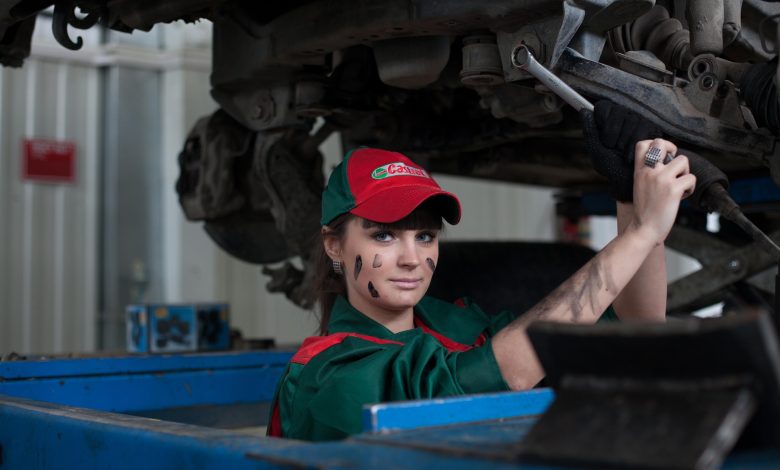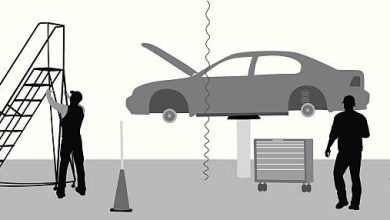How to Know if Your Car Needs a Tyres Change?

Your tyres are the primary point of contact between your car and the road; keeping them in good condition is an absolute must if you want to stay safe. Tyres are more vital than we realise as the component that your car drives on. Getting a good set of tyres for the road is only the first step. Even the greatest tyres begin to wear out after a few hundred kilometres, compromising the car’s performance and safety. Tyres are frequently both the most ignored and the most vital component of any ride. As the final gear between your automobile and the road, all of your accelerating, braking, and turning torque must be transmitted via your tyres before your car moves an inch. Even if you have the most powerful car in the world, it is useless unless it is equipped with the correct tyres.
Have you ever considered whether now is the best time to replace your worn-out car tyres? The appearance of your tyres is critical for maintaining your vehicle’s security, execution, and effectiveness. However, your tyres will eventually wear down, losing their grip and slowing down capacity. Fortunately, if you’re wondering when to start looking for new Dunlop tyres UK, there are a few pointers that can help keep you up to date.
Look for tread suggestions in your state or region.
The fundamental function of tyre tread is to divert moisture away from the tyre in order to improve traction and minimise slippage on wet roads. The tyre is no longer protected and is unlawful in many parts of the world when the tread is down to 232 inches (0.16 cm). Examine the transportation department’s tyre tread requirements for your state or region. When a tyre has contracted to 1/16 inch (0.16 cm) of its original tread profundity, it is deemed legally broken down. The tyre tread base profundity is 0.0456 inches (1.16 mm) over the middle 3/4 of the tread circumference.
If you observe uneven track wear, take your car in for service.
This could suggest a misaligned wheel, insufficient filling pressure, a need for tyre revolution, or all of the above. Unbalanced track wear, whatever the cause, is a warning that your car needs to be serviced. If uneven tyre wear is significant, or if tyres wear out faster than expected, have a professional tyre specialist inspect your suspension and make any necessary adjustments before changing tyres. An ill-advised setup or worn-out suspension elements can dramatically reduce the life of a tyre. To prevent unstable track conditions, rotate your tyres from the front to raise two by two. Move both front tyres to the back and vice versa.
Depth of tread
New tyres have deep tread, which wears away with use, and the tread depth diminishes as use increases. The ability to evacuate water reduces proportionally as the tread depth lowers. It is not harmful until the tread is nearly 1/16th of an inch wide. A lot is also dependent on the weather and the amount of water that the tyres must discharge. Even so, it’s a good idea to use a depth gauge to verify the tread depth. A one rupee coin can also help to determine tread depth. Make sure the outer surface comes up to, if not entirely covers, the dot. Minimum tread depth markings are fitted into some tyres.
Tyre life cycle
Regardless of how frequently you drive your vehicle, the tyres wear down over time and not just from use. Tyres have an average life of roughly 6-7 years, therefore whether your car’s tyres have a lot of treads or are in poor condition in any manner, replacing them after 6-7 years is preferable. This information is also available in the vehicle’s service manual and with the new tyre arrangement that you purchase.
Breaks
Ideally, this should not occur over a lengthy period of time unless you bought a large number of old tyres in any event. As elastic declines, it separates and begins to degrade. You’d start seeing visual signs of it on tyres as they broke. Such tyre can blow up suddenly while driving and tear off with little to no warning, resulting in a mishap. Replace the tyre before this happens. It is better to be safe than sorry.
Your vehicle’s tyres have visible sidewall damage.
When checking your tyre pressure, a quick visual inspection of tyre condition will assist you in identifying damage early. At lowering the risk of tyre failure. A cut, expansion, or missing section of the sidewall is usually the result of contact with a drain or pothole, and it can make a tyre unroadworthy and dangerous. A lump indicates that the inward design of the tyre sidewall has separated. They allowing the air inside to push against the elastic looking of the sidewall, putting the tyre at a higher risk of failure. Another symptom to look for is enraging (small breaks) on the tyre sidewall. If you live near the ocean or your vehicle spends a lot of time outside in the sun, keep an eye out for these indications as well.





